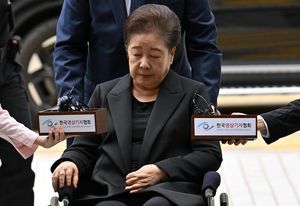
Curse of the Pharaohs, a city legend born from a series of mysterious deaths of archaeologists, came to the surface with a recent claim suggesting that the infamous could be due to radiation.
According to The Sun UK, on the 26th, a research team led by Ross Fellowes published a paper earlier this month in the Journal of Scientific Exploration (JSE). The paper asserts the relevance of the numerous deaths of archaeologists involved in the excavation of Tutankhamun’s tomb with radiation present within the tomb.
The research team believes that most ancient tombs across Egypt could be filled with substantial amounts of radiation, bearing out confirmed cases of radiation levels spiking inexplicably, even when considering geographical characteristics in certain regions of Egypt. Most of these cases are concentrated in areas adjacent to the pyramids, such as Giza.
Fellowes avers that ancient people deliberately placed radioactive materials, which emit toxic waste, in many Pharaoh tombs, including that of Tutankhamun.
He stated, “Both modern and ancient Egyptian populations have abnormally high rates of leukemia, bone or blood, or lymphoma,” suggesting a correlation with radiation exposure.
High radiation levels have been found in several burial sites, including Tutankhamun, Osiris, and the necropolis of Saqqara, via Fellowes. Radioactive gas radon was detected in several underground tombs in Saqqara. He stated, “Very high radiation levels are found in ancient Egyptian tombs. It is ten times the permitted safety standard.”
He also claimed that ancient Egyptians were aware of the dangers of radiation. He said, “In some tombs, it is written’ ‘If you open this tomb, you will die of a disease that no doctor can diagnose.” The words interpreted as evil spirits and forbidden could mean radiation.
Meanwhile, the urban legend known as Tutankhamun’s Curse or Curse of the Pharaohs began in 1922. At that time, four men excavating the tomb of Tutankhamun, a pharaoh of the 18th Dynasty of Egypt (BC1342-1324), died one after another, giving rise to such rumors.
The first death was British financier Carnarvon, who died five months after the excavation due to pneumonia caused by blood poisoning from an infection from a mosquito bite during shaving. This was followed by the deaths of American financier George Jay Gould, Archibald Douglas, a Brit who X-rayed the mummy in London, and American archaeologist James Henry Breasted, totaling four deaths within three years of the excavation.
Several hypotheses have been proposed to explain these mysterious deaths. The prevailing theory has been that the excavation team did not consider ancient bacteria that had accumulated on the mummy in the tomb over a long period, leading to bacterial infection. It is argued that the tomb of the Pharaoh was filled with meat, vegetables, and fruits, which could have bred insects, mold, and bacteria, leading to a fatal bacterial infection.










Most Commented